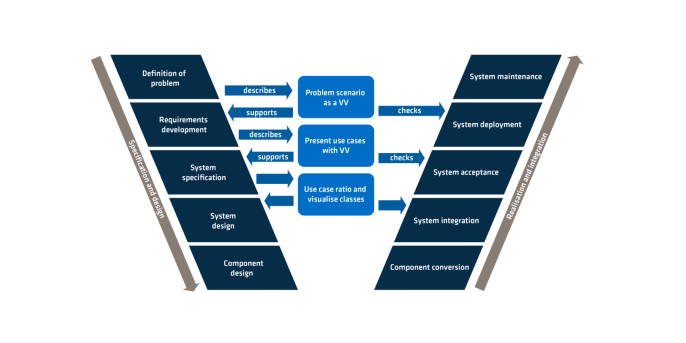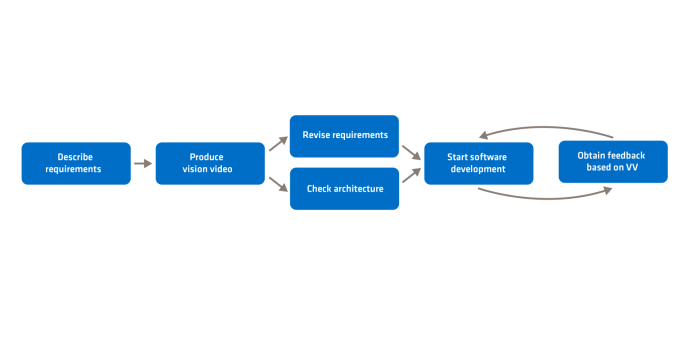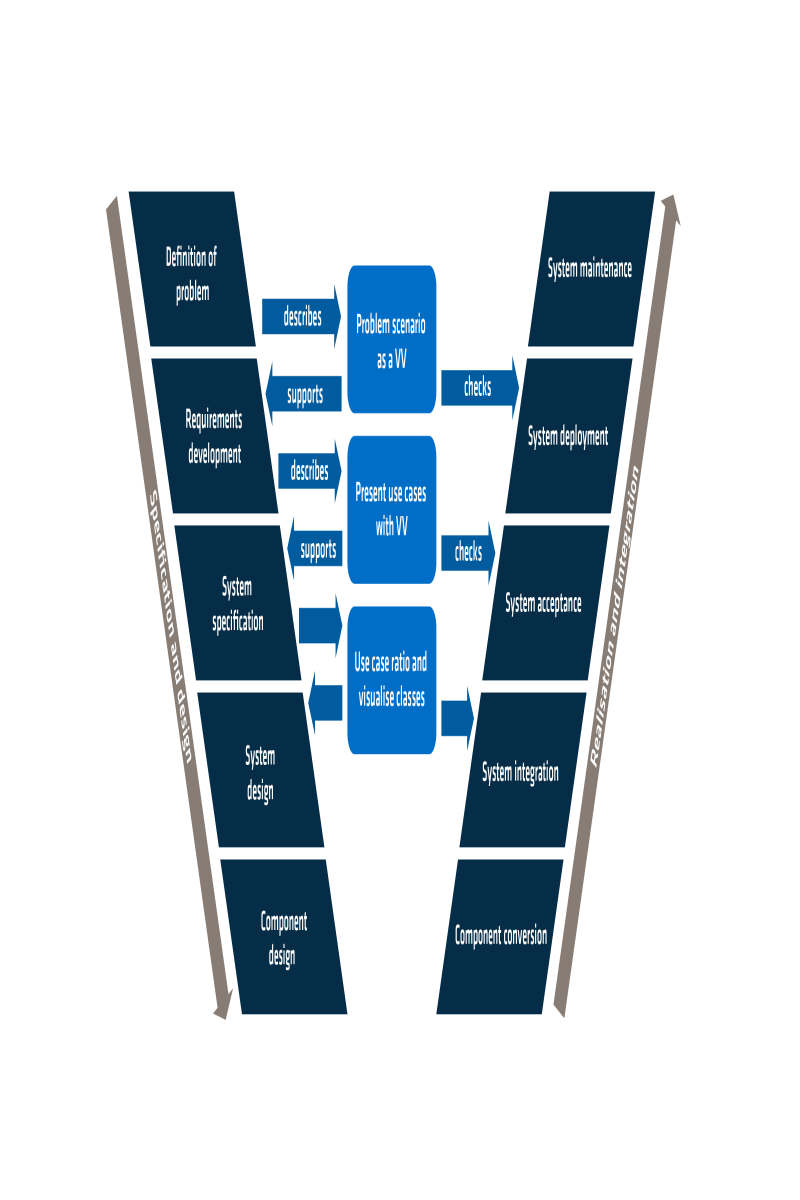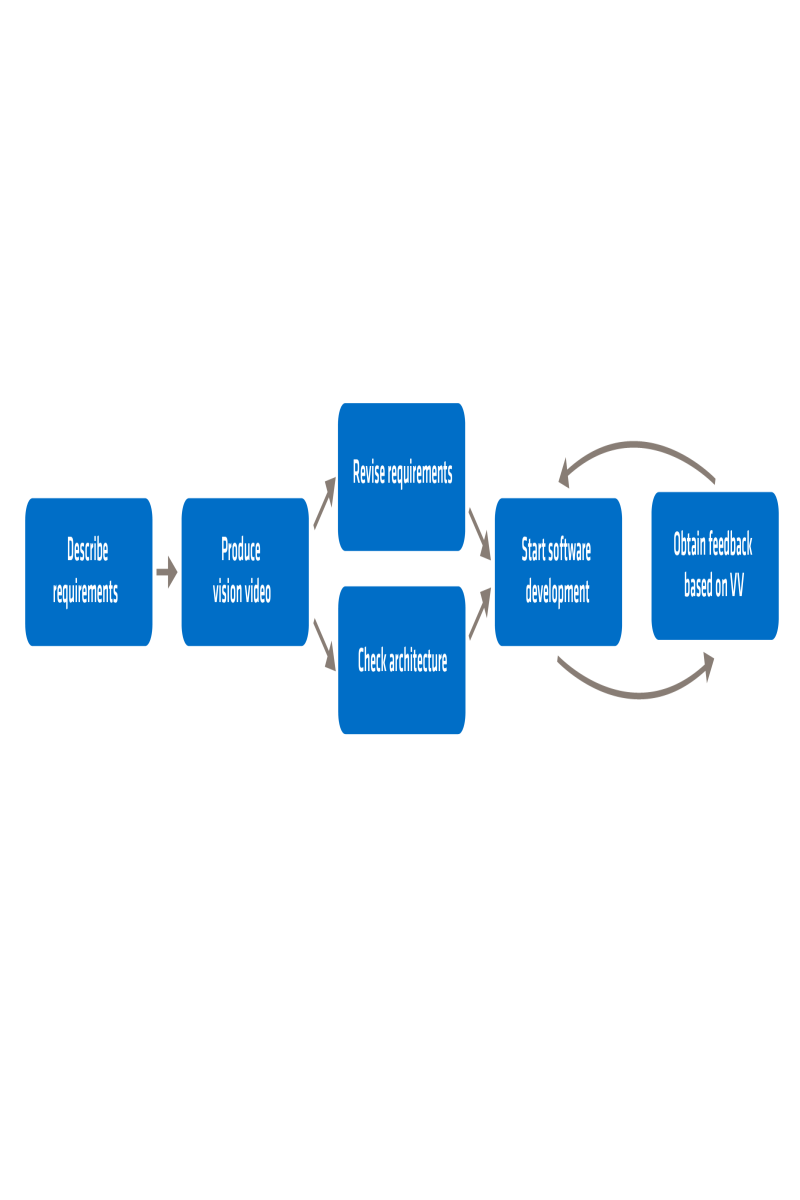8. February 2022 By Robert Völkner
Using vision videos to support software development projects
Once a software development project has been completed, one of the major signs that it was successful is if the end product meets the customer’s expectations. For this to happen, the customer’s ideas and what they want in terms of the software has to be communicated to the project team, which then needs to implement everything on a technical level. Communication between everyone involved in the project is the key to success. Vision videos can aid communication by providing visual support in places where exclusively using verbal communication can easily lead to misunderstandings and mistakes.
What are vision videos?
In general, the term ‘vision video’ refers to a type of video that represents a vision or parts of a vision. The aim of these videos is to create a common understanding between everyone involved regarding the vision presented in the video. In the context of software development projects, the vision presented in the video usually refers to the product that is to be created by the project. The main people involved here include the customer for whom the software is to be developed and the development team commissioned to create the software.
However, the question often arises as to what exactly the vision video needs to present and how this will represent the vision. While strictly speaking there are no hard and fast rules for this, presenting the software to be developed in a specific scenario that it will typically be used in has proven to be effective. First and foremost, the video should present a potential real-life usage environment in which the user uses the software so as to convey a credible and realistic situation to the customer.
However, the primary focus of the vision video should be on the functions provided by the software, meaning it’s very much a case of ‘show, don’t tell’. Instead of simply just saying what the software will be able to do, it’s much more effective to show the viewer exactly what it can do by demonstrating how the user interacts with it. However, seeing as the software usually hasn’t been developed by the time the video is produced, it can be replaced by a mock-up. It’s incredibly easy to create a mock-up in no time at all using various open-source tools.
In the context of software development, vision videos can be an asset to the software development process at just about any point in time. To illustrate this, the following diagram shows an example of a traditional development process based on a V-model.

Here you can see the individual steps of the development process shown in blue and examples of vision videos in green. The diagram illustrates that vision videos can be produced based on a description and then used to support the next step of the software development process. In addition, they can serve as a control, since the vision videos can be used to check the results of the development process. To give an example of this, a problem scenario is presented in a vision video based on the initial definition of the problem. The vision video can then be used to both develop the requirements and, towards the end of the project, check the functions of the system.
Promotional videos and vision videos – what’s the difference?
You may have noticed that, from a conceptual point of view, vision videos share a number of similarities with promotional videos, meaning they are often mistakenly confused or even deemed to be the same thing. However, there are two key differences that set vision videos apart from promotional videos: what they want to achieve and how much they cost. While promotional videos generally serve to persuade customers to make a purchasing decision regarding the product in the video, vision videos are primarily used to aid communication between the people involved in a project through visual means. There is a reason that other visual means – such as various diagrams and models – have long been used to convey concepts and ideas. Videos are merely the next logical step here. After all, if a picture is worth a thousand words, how much can you express with a video?
The differences in what the two types of videos want to achieve also means there is a monumental difference in the costs of producing a vision video in comparison to a promotional video. Since vision videos are not trying to sell the product they depict, but instead serve as a technical communication aid within a project, they don’t require expensive camera teams or video producers. Modern technology means that vision videos can be recorded with a simple smartphone camera and a tripod and edited with a simple open-source editing tool. The time required is also limited to a few working hours.
Benefits and opportunities
Now that you’ve read the explanation of what makes a vision video, you may be wondering what specific benefits there are in producing one.
As I’ve already mentioned, the main benefit here is the visual aid for the communication between the people involved in the project. It’s generally much easier to communicate concepts and ideas if you can build them on a foundation. A vision video for a software program that is going to be developed can serve as a basis for discussion, allowing ideas to be clarified and potential misunderstandings to be cleared up. This is an opportunity for international project teams in particular, where language and cultural differences can easily lead to misunderstandings. Vision videos can help overcome language and cultural barriers in international teams as visual media are universally understandable regardless of language.
This means that, for a small investment, vision videos have the potential to avoid costly, wide-scale errors that are only discovered later in the project cycle due to obvious misunderstandings or miscommunication between the customer and the development team.
Vision videos also benefit the software development process. Once a vision video has been created that reflects the customer’s ideas and what they want, the development team can use it to derive work packages from it. The visual representation of the product helps to flesh out the functions of the software. Plus, a vision video can serve as a reference in case queries need to be sent to the customer.
Vision videos can usually be produced quickly and cheaply, making them ideal for agile projects. The generally dynamic nature of agile projects means they are usually prone to changes in terms of the implementation of ideas and concepts. A change in concept can be visualised quickly and cheaply using vision videos. It may also transpire that visualising ideas and concepts in a vision video is the only way to uncover any changes that need to be made, or that the video even sparks completely new ideas.
Case study: vision videos in the context of insurance
Seeing as the explanations so far have been highly theoretical, let’s turn our attention to a small case study to illustrate the usefulness of vision videos in the context of insurance. The diagram below outlines the timeline for this case study:

In this example, an insurance provider wants to offer potential customers the option of taking out insurance policies online. In the first step, a requirements engineer from the IT service provider commissioned by the insurance provider with this project ascertains the requirements for the product in a meeting with a representative from the insurance provider. One of the things that the requirements engineer learns during the meeting is that the customer wants the software to require a photo or scan of the user’s identity card in addition to their usual personal details in order to verify their identity.
The requirements engineer then works with their team to produce a vision video based on this information. In this vision video, a potential future customer can be seen visiting the insurance provider’s website using their device at home, entering their personal data and photographing and uploading their identity card. After confirming their details, the customer receives a success message confirming that they are now insured with immediate effect.
After the insurance provider is shown this vision video, they notice that the video doesn’t show them checking the personal data against the uploaded identity card and confirming the two match before approving the insurance policy. This detail was not clearly communicated in the initial meeting and leads to the scope of the project being expanded to include an interface for insurance provider employees. This also results in a significantly larger scope of work on the part of the IT service provider at the same time. Expanding the scope in this way may result in the basic architecture of the product needing to be redesigned should it be necessary. Using the insights from the vision video, the development team is then able to produce the software for the insurance provider with a lower risk of error. The vision video is used as a basis to generate work packages for the development process and to obtain feedback from the insurance provider during the development process.
Errors in communication, such as in this example, can lead to additional work at a later stage in the project and thus to large costs, which can be avoided by using a vision video that is relatively cheap to produce. I have kept this case study simple for the sake of clarity. The larger and more complex the software development project becomes, the more fatal the effects of errors in communication can be. This makes vision videos even more attractive for larger projects.
Production tips for vision videos
Since producing videos is something that most IT professionals have probably not had to do before, here are some simple tips on how to produce a good vision video:
- The length of vision videos should be limited to only a few minutes so that the viewer’s attention does not drop off.
- The beginning of the vision video should show the user’s real-life environment to put the use of the product into context.
- To better convey the concept of the product, the vision video should define a problem, the solution to the problem in the form of the product and the added value generated. The whole thing can also be combined with a short story.
- The focus of the vision video should usually be in the centre of the picture. Also, make sure to use a tripod so that the picture is steady and ensure the lighting is adequate during the real-life portion of the vision video.
Conclusion
Communicating requirements and conceptualising ideas are concepts that are relevant in any software development process. Vision videos can play a supporting role here by visualising the future product and thus serve as a basis for communication between everyone involved in the project. They offer opportunities to simplify the software development process and avoid additional costs caused by misunderstandings and miscommunications.
Would you like to learn more about exciting topics from the world of adesso? Then check out our latest blog posts.



